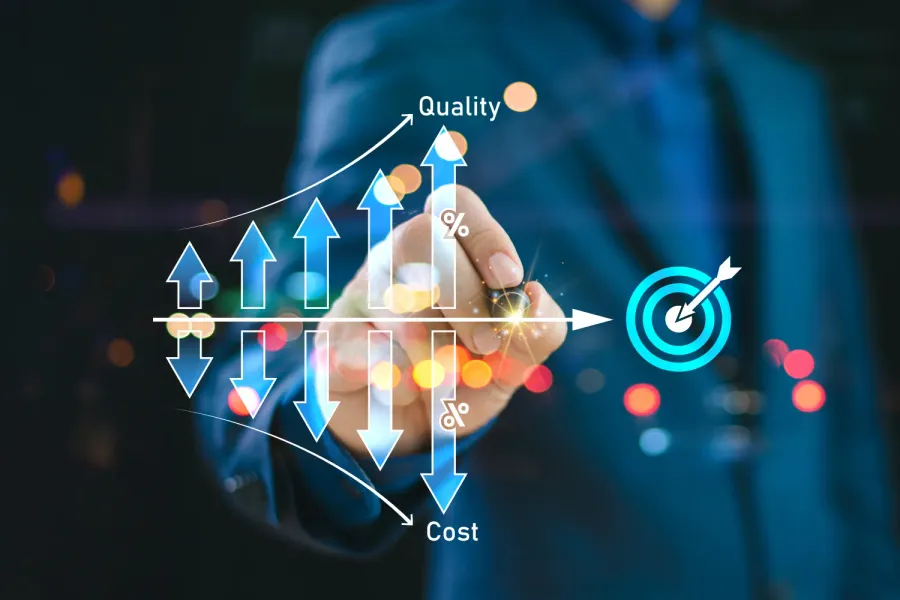
Sales is the heart of a business. A business's ability to sell its product or service determines its growth and success — and one of the greatest struggles of sales professionals is maintaining a strong pipeline of qualified leads.
The process of finding a lead and seeing it through to the buying process to become a closed deal takes an enormous amount of time and effort. To be successful at this can feel more like an art than a science.
While sales remain an artform, we have better tools that assist in the process to make a team more efficient. These tools can make all the difference when competition is high and there’s a need to get better-quality leads.
To be successful at both sales qualification and lead optimization, your sales team needs to have a deep understanding of the customer's needs and use the information at their disposal with care.
What is sales qualification?
Sales qualification is the process of determining if a lead is worth pursuing, and is capable of eventually buying your product or solution. It becomes a matter of determining if this lead is a good fit, if they're ready to buy, and if they're even able to make a buying decision.
Sending a sales team full force on unqualified leads who don't meet your decision criteria is a huge expense and wastes valuable workforce hours.
The work that goes into qualifying a lead is a skillset of its own. It involves finding a potential customer that appears to be a good match and then finding your way to whoever makes the purchase decision.
What are the elements of sales qualification?
Within sales qualification, a helpful framework is BANT. This acronym stands for budget, authority, need, and timeline. These key elements are essential for a sales team to focus on the most important aspects of their lead.
Let’s look at each element:
- Budget: Is the lead in a financial position to be able to pay for your product or service?
- Authority: Is the person the sales team is focusing on the person with decision-making authority, or are they simply involved in the decision-making process?
- Need: Is the product or service you're offering fulfilling a need that the business has?
- Timeline: Does the lead have a timeline for purchasing your product or service?
With this framework in mind, your sales team can make sure leads are on track to close. Not every prospect is an ideal fit for your product — make sure your sales team is empowered to disqualify just as easily as they can qualify a lead.
What is lead optimization?
Lead optimization is the ability to refine a lead to ensure they're as sales-ready as possible. This is through a process of moving your leads through the funnel. Your sales process should be tailored to your "perfect" lead, or your Ideal Customer Profile (ICP).
Here are the key points for optimizing your leads process:
Scoring a lead
Lead scoring is an important methodology for your sales team to rank a lead compared to others and how ideally they match for your company.
A high-ranking lead will have the highest likelihood of conversion and signal to your sales team about where to place their efforts. Lead scoring often includes both behavioral and demographic factors. Behavioral factors are what your leads do, like engaging with your marketing materials or your product. Demographic factors are things like title, role, or company size.
Communication
If you're able to identify the way in which a specific lead prefers to communicate, you can increase your chance of conversion.
Personalizing your communication efforts is easy to do and will build trust and confidence with your lead. These personalized efforts can be with dynamic emails, content targeted to them, or special offers based on their interest. These efforts will foster a stronger connection and make your qualified lead feel valued.
Data
Analyzing data like lead quality, cost per acquisition, and conversion rates can give your team a huge boost when it comes to identifying a lead's behavior. Looking at the data helps a team identify patterns to predict future behavior and shift strategies as needed. It can also lead to identifying what otherwise may have been a missed opportunity.
How to automate sales qualification and lead optimization
The sales process is highly manual. Using tools to automate the steps not only helps save time but can help your sales team focus on the most important aspects of the process.
Automated tools can be especially helpful in B2B sales, where sales qualifying is more time-consuming. These tools can reduce the burden on your salespeople.
Technology can streamline the lead qualification process by automating it in the following ways:
Automated lead scoring
Automated sales tools and software can use the parameters you give them to find leads that match your criteria. It will assign the qualified lead a numerical value based on the lead's engagement, behavior, and business information.
One of the best parts of an automated lead scoring system is that it updates in real time as data changes. These systems are often provided by CRMs or can be integrated into your current system.
Chatbots
Chatbots and AI assistants can do the repetitive work that would've once taken the time and effort of a human. The advancement of AI chatbots allows them to process language in a more natural way. With a chatbot being able to handle communications 24/7 and reply instantly, it becomes much easier to ask a potential lead sales qualification questions.
With the right questions asked using a BANT framework, the leads can be routed to your sales team, or you can disqualify them based on your qualification criteria.
Email automation
Automated emails can be used to create and deliver custom campaigns that are dynamically driven based on the interactions of the lead. These can be emails that change depending on site interaction, purchase history, or other behavior.
The gathered engagement data can become a part of your lead scoring which benefits your sales team. It can also be a way to nurture your leads through campaigns depending on where they are in your funnel.
Enrichment
Automated data enrichment can pull in data from other sources to complete a profile. The information can be pulled from social media, business directories, and databases to build out a complete profile of a business, its stakeholders and decision-makers, and the ultimate economic buyer.
Data analytics
Data can be analyzed to identify which leads are most likely to convert. Automated tools can consume large sets of data and use machine learning to show the likelihood of conversion and based on the metrics, show you what trends you can expect to see. Using automated systems allows your team to look at vast amounts of data, and parse out insights that would be impossible to uncover with manual analysis alone.
The ability to scale an automated system with your sales teams means you can grow faster and go farther than your competition.
Staying on top of emails
With your sales qualification framework and sales funnel in place, you may look to finally prioritize your inbox. If you could get you and your team closer to inbox zero your company could become Superhuman. Whether your team needs to schedule a discovery call, perform outreach, or clear out a backlog, we can help.
We provide a suite of tools that are designed to give you the fastest email experience ever made. Imagine getting back four hours every week for every staff member. When writing emails all you have to do is provide a couple of key phrases and our system will build out a full email that reads exactly like you wrote it.
Your entire team can stay informed and on the same page with our tools that help manage calendars. Whether you need to see it at a glance or schedule a sales call, you can do it directly from your email. Schedule custom follow-up reminders on qualified prospects worth pursuing so it doesn't fall into the backlog of other emails.
You and your team can stay on top of the incoming emails by triaging them. Send the most important emails to an inbox of their own where everyone can monitor if they've been read. You can avoid collisions and conflicting information by seeing when someone else on your team is replying to an email — and with Superhuman for sales, your team can perform at its best.



